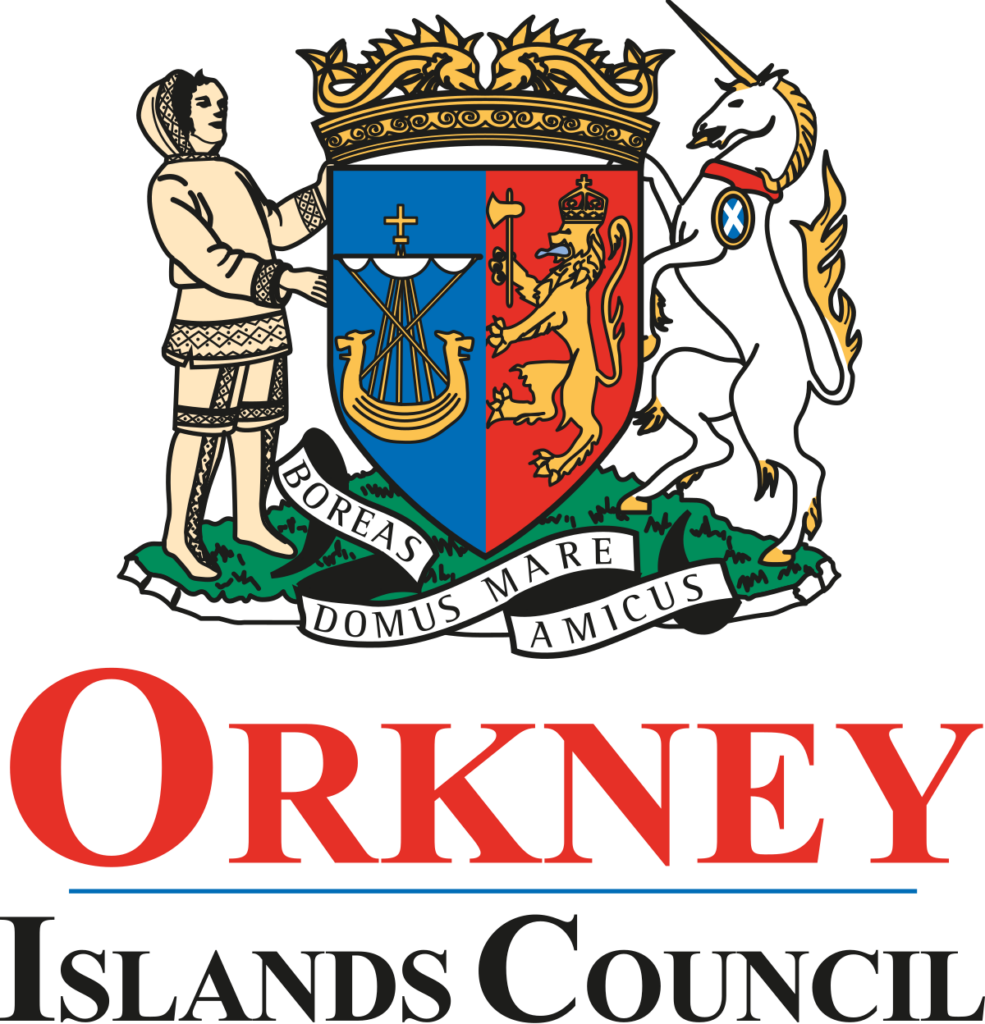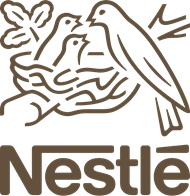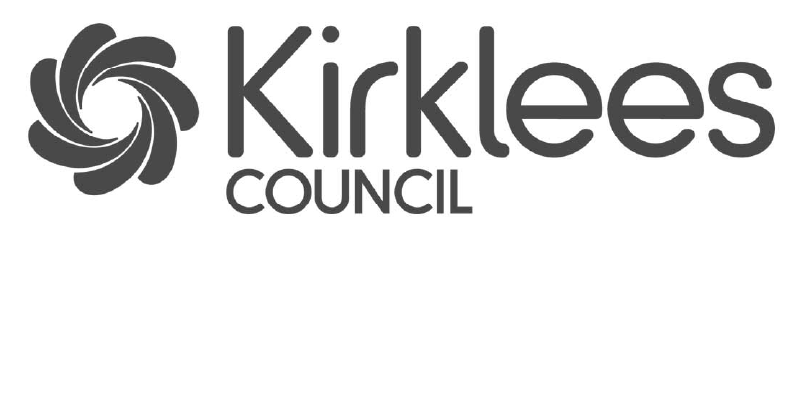Summary
When North Bristol Trust (NBT) was tasked with migrating their existing reporting tool to Power BI, CACI was their trusted partner that supported the successful production of a migration readiness package. This readiness package included a detailed report of all quantitative and qualitative findings, a newfound understanding of existing functions and capabilities, a reassessment of future requirements and definitive progression of next steps in the Trust’s migration from business case creation to sign-off.
NBT possessed over 100 reports in their pre-existing analytics platform, ranging from list-based for front line, operational workers to more backend, dashboard and analysis reports for email distribution. Once these reports needed to move from NBT’s pre-existing system to Power BI, the Trust wanted to understand and reconsider their design, particularly its contents and data structure.
Company size
13,000+
Industry
Healthcare
Products used
Power BI
Challenge
Andrew Elliott, Head of Data Analytics at North Bristol Trust, has handled analytics platform outputs and has been a key player in the Trust’s Power BI migration.
The first course of action identified for NBT was the need to improve efficiency when creating reports. This was a multi-step action, not simply addressing the speed at which reports are updated, but the efficiency and maintenance of data.
To achieve this, Andrew’s team revisited their hospital data analysis practices to ensure they would remain up-to-date, reliable and accurate.
There was also an emphasis on redesigning the data models that fed the reports to meet requirements. This required a substantial amount of analysis to understand where data was coming from and what NBT was doing with that data to display the report. Once this analysis was complete, NBT had to consider how it could be streamlined to become more efficient and recreate that logic in a new location within their data warehouse.
With these needs in consideration, Andrew’s team reached a consensus on the requirement for a new reporting database, as well as a redesign of the data models that would facilitate the moving of their reporting tool.
Solution
This process took the Trust a lot of time and input from CACI to execute, as the initial input stages were focused on providing business knowledge and data understanding, with CACI possessing the technical knowledge. CACI’s Richard Brennan, Principal Consultant, worked on the mapping process and provided ongoing support to Andrew’s team.
Determining the best design for that data followed this. Andrew’s team had ambitions on what the Trust wanted to do with their data, one of which was knowing that through Power BI, other analysts from across the hospital could be brought on board. The board was an especially important and crucial factor as NBT approached the Power BI go-live date. For Andrew’s team, this included ensuring alignment on decision-making, gaining organisation-wide buy-in and keeping motivation up.
“We weren’t putting our head in the sand, we were very honest with any issues that we had and [the board was] immensely helpful in their responses, particularly around communication,” Andrew shared.
In the weeks prior to going live, Andrew’s team liaised with key individuals in the Trust across various departments and divisions on the status of upcoming reports. Power BI also began to be displayed on the intranet’s homepage of the intranet for collective awareness on Power BI going live. NBT followed an additional CACI recommendation of forming a Power BI developer group for regular meetings to take place on what Andrew’s team was doing, how they were using Power BI, encourage others to use Power BI and share best practises.
All licenses were in place and once the reports were signed off as tested, they were moved into the appropriate workspace apps for users. A soft launch using advanced functionality for several areas took place a week prior to go-live to ensure comfortability of using Power BI and iron out any final issues before eradicating their pre-existing BI tool. The final step was adding users to groups for immediate access and turning off the original platform.
By Friday afternoon, users were given access while the original platform remained available over the weekend, and by Monday morning, a blocking page prohibiting access was implemented, marking the official introduction of Power BI.
The diversity of requirements and revisiting the data design were two pivotal focal points to be reprioritised over the course of the implementation.
The ambition around optimised data design was initially obfuscated due to the comparatively little data available from various clinical divisions and departments across the hospital that used Excel. This prompted Andrew and his team to encourage the use of one cohesive reporting platform to ensure data sufficiency, accuracy and reliability, creating an environment that analysts would engage with and host their reporting on and unite users.
The immense size of this ambition quickly became clear to the Trust, particularly regarding the data scope, the systems it took from, the amount of available data and the data that was also being used by divisional analysts. The Trust also acknowledged the fixed date by which this project had to be completed. Upon further investigation into the data sources, an added layer of complexity came to be: rebuilding all the data sources into a new data model would not be possible to achieve by the stringent deadline. With CACI’s help, however, the situation took a positive turn.
“CACI provided helpful support and advice [during this time], even during times where I think our project had gone from a green to an amber stage where we were coming into the last couple of months,” Andrew shared. “CACI was incredibly supportive of the decisions that we were making, also contributing to those decisions themselves.”
Results
Richard’s Power BI configuration has set up Andrew’s team for a successful first few weeks of post-go-live, with the team receiving about 600 hits on reports in the first two days post-go-live and receiving approximately 60 support requests (mainly access requests or general functionality enquiries). While some minor accuracy issues with outpatients arose and were resolved quickly, the reporting has remained accurate and was very well received by the end users.
According to Andrew, Richard’s continued support in demonstrating any changes to the semantic models, identifying any issues with uploading data or explaining the environment’s functions has been particularly useful.
“We had Richard in the background with any small changes that we wanted to do with the data loads or semantic models, and that support was useful in the run-up and afterwards, because we’ve watched how to look after this system as Richard has built it, but when you’re actually live and you’ve got to look after yourself, it’s nice to have that bit of hand-holding as you learn,” he explained.
That brings us to present day, where NBT has moved out of the post-go-live period of constant close monitoring and rapid issue resolution towards a business-as-usual position. Plans for future enhancements to the environment and the data behind it can now be reviewed, along with an assessment of the Trust’s future and the potential of reaching a similar outcome with NBT’s partner, UHBW, enabling both data teams to have the same view of data across Trusts and share it seamlessly. The project’s success also led to Andrew and his team being nominated by NBT’s Operations leadership for their annual staff award, an internal mark of excellence and recognition for a project well delivered.

Summary
Pintarget creates and delivers precise, targeted local campaigns for brands and businesses across multiple media channels. The firm achieves exceptional results for clients using three principles: access to the best data, using technology to create efficiency and applying insight to understand how to reach local consumers.
Pintarget clients include big-name brands like SodaStream, Coca-Cola, The Southern Co-op, McCarthy & Stone and Greene King. The company partners with leading technology, customer marketing and data providers to power its unique service. Recently acquired by The Specialist Works, Pintarget’s highly awarded team has decades of experience in the media industry, working at the cutting edge of regional and digital media.
Company size
250
Industry
Media & publishing
Products used
Challenge
Targeting campaigns with exceptional precision
Pintarget needed to find an audience of households with children aged 5-11 whose behaviours and characteristics made them a good fit for the brand’s services.
Solution
Pintarget uses InSite to drive sales performance and increase market share for online, bricks and mortar and hybrid clients. Using InSite, the team mapped this audience around the centres, to find areas with potential for growth.
Pintarget’s unique proposition depends on excellent demographic and geographic data that’s easy to model and analyse. The team identified that CACI’s InSite software coupled with Acorn data could give the most granular and detailed view of the areas and consumers they wanted to target for clients.
Lead location and data analyst Rob Fogg explains:
“InSite is integral to our approach and modelling: we use it to investigate where existing customers come from, to identify similar customer bases elsewhere and to detect missed opportunities where our clients could achieve better market share and impact. Our results come from a strong and sophisticated methodology.”
Working with Meantime Brewing and The Southern Co-op, Pintarget looked at five-minute drivetimes around 200 stores and overlaid demographic information about likely craft beer consumers. The team recommended the stores to prioritise in a campaign for Meantime designed to draw customers into their local Southern Co-op store to buy a product that matches their known preferences.
Using existing customer data provided by clients, Pintarget uses InSite to classify customers by Acorn type. With this data, Pintarget can identify the most prevalent Acorn types among existing customers. These are then mapped using InSite to reveal where similar customers may be concentrated.
Pintarget planned and executed highly targeted local marketing across multiple channels for Silent Pool Gin to specific households in catchments away from their Surrey base. The campaign achieved excellent uptake because it focused on households with a known propensity to purchase and behave like the client’s existing customers.
Results
Campaign innovation from trusted InSite data, tools and expertise.
Using geodemographic targeting at a granular level, there’s less wastage in marketing communications, which means that Pintarget’s clients get more for their money. Rob and the team can build campaigns that use a range of channels to reach individual households, so the brand and message resonates and has good frequency. That puts relevant brands and offers firmly in the front of consumers’ minds, so they’re primed to purchase when the opportunity arises, either in a local physical outlet or online.


Summary
Perfetti Van Melle (PVM) is one of the world’s largest manufacturers and distributors of confectionery and chewing gum, headquartered in The Netherlands. PVM’s global brands are enjoyed in over 150 countries and include Mentos, Chupa Chups, Fruit-tella & Smint.
Company size
10,000+
Industry
Manufacturing
Products used
Challenge
Before engaging with CACI, PVM UK were manually planning their field sales territories and routes, which the management team knew was inefficient.
PVM wanted a tool to help grow their UK business, specifically in the independent channel where they had under traded in the past. Due to the unknown returns and instability in this market, they needed to drive efficiencies and savings in their current field team, rather than recruiting more headcount. Being more efficient would allow PVM to call on more stores in the independent channel.
Solution
PVM licenced InSite FieldForce, CACI’s resource planning and territory optimisation tool, to understand the utilisation of the current team, taking into consideration variables such as travel time, visit frequencies, in call times, and the additional visits to be made to the Independent channel.
The field sales territories were optimised to create workload balanced and drive time efficient territories for each field sales rep, built around their home locations.
PVM then used CallSmart, CACI’s route optimisation software, to optimise routes for their team. Planning with an algorithm gave them more control over the stores, and channels, the reps were visiting based on business strategy rather than ‘gut feel’.
Results
PVM were able to model multiple what-if scenarios prior to implementation which gave them the confidence that they could be impactful in the independent channel whilst maintaining appropriate call coverage to the multiples.
Using CACI’s tools, PVM minimised the risk associated with entering a new channel, without investing in any additional headcount. The efficiencies gained enabled PVM to make thousands of additional calls to the independent channel, resulting in a double digit increase in sales revenue across the field sales team.
CACI’s tools are used by PVM on an ongoing basis to maintain efficiencies and immediately respond to change. Optimised call schedules integrate with their retail execution solution providing reps with visibility of their calendars allowing the team to be more agile.
Learn more about FieldForce and CallSmart.


Summary
Oxford Health NHS Foundation Trust operates across a large region of the South West of England providing physical, mental health and social care.
As a valued customer of CACI, we spoke to Head of Costing, Paul Vincent about some of the challenges his team faced and the improvements they’ve made through effective use of their costing solution Synergy 4.
Company size
10,000+
Industry
Healthcare
Products used
Challenge
The teams at Oxford Health were burdened with time consuming cost calculations that could only be produced at a high level – nowhere near their requirements for team and patient level activity-based costing.
Due to the work involved, Paul describes the costing process as being too admin heavy.
“Most of the costings were produced using excel and time was spent processing the data rather than analysing the data.”
Paul Vincent, Head of Costing, Oxford Health
When CACI were appointed, a key deliverable was to implement a solution that allowed Oxford Health to focus on data analysis in order to take actions to improve apportionment and allocation of money, as well as to kick start improving activity data by identifying gaps or lack of recording.
Solution
In order to meet the core requirements of an efficient alternative to costing calculations, as well as providing opportunities to analyse the data and gain insight, CACI’s proposed solution was Synergy4.
An NHSI Healthcare Costing Standards compliant, patient level costing solution for end-to-end reporting and management.
As one of the hurdles Oxford Health was facing was that they weren’t able to report at a detailed level, Synergy would help the trust overcome this challenge by allowing activity to be costed at the lowest level and mapping to the trust’s own user defined hierarches to produce the outputs they needed.
Paul told us this aspect has proven to be key for Oxford Health.
“The amount of detail that we can cost is extremely useful, if the activity data is robust, as we can cost by different criteria e.g. Referring GP and GP Practice, Consultant, Member of Staff that carried out the consultation, age and many more.”
Paul Vincent, Head of Costing, Oxford Health
Results
Since the implementation of Synergy4 Oxford Health have seen a number of improvements. The time saved on manual processing of the data mean they are now able to focus on data analysis and turn the insights into actions within the trust that directly impact funding.
Oxford Health continue work with CACI to maximise the benefits of Synergy and generate insights that help improve outcomes for staff and patients across the trust.


Summary
Orkney Islands Council is the smallest council in the United Kingdom, situated on Scotland’s north-east coast. With a population of approximately 22,000 people, it spans 70 square miles and encompasses 22 inhabited islands. Orkney Islands Council supplies all local authority services for the archipelago, including education, roads, housing, waste collection and more.
Of the many areas of support that the Council provides, three of the focus areas have been to update the Housing Need and Demand Assessment (HNDA), to receive approval to support families and children in need through education and tackling fuel poverty. To address these priorities, the Council needed accurate, up-to-date, and consistent information that would help benchmark Orkney against other parts of the country.
Company size
5,000
Industry
Non-Profit
Products used
Challenge
Lack of robust, credible information due to small yet widespread population
One of the greatest challenges for the Council has been Orkney’s small yet widespread population. This has complicated the acquisition of statistical information – particularly information that is robust and credible. Slight changes in population size can considerably sway numeric results, which has hindered the Council’s benchmarking capability and innate understanding of the financial realities of Orkney’s inhabitants.
Lack of cohesive data specific to Orkney
The Council has previously attempted to extrapolate their own data and information from various sources, such as housing statistics available from the Scottish Housing Survey. Interpreting the results must be done quite carefully, however, as Orkney-specific information must be compared with the rest of the Scottish population, this presents a unique challenge given the demographic make-up of the Islands.
Extreme living conditions: high fuel poverty and intense climate
Orkney has some of the highest fuel poverty in the UK, which has significantly inflated the price paid per unit of electricity. Its rural location coupled with extreme weather (particularly during winter), longer hours of darkness and lower temperatures have been strenuous on inhabitants and expensive to keep up with. The ability to earn is also limited on the islands.
Solution
CACI’s income dataset, Paycheck, has been licensed by the Council to help them better understand the needs and demands of their communities. It supplies detailed insight into current housing affordability amidst the ongoing cost of living crisis, identifies areas of deprivation in which families and children require additional resources or access to education and opportunities, and addresses fuel poverty resulting from the high amount of energy and electricity being pushed out onto the islands.
Paycheck gives the Council a unique, granular point of view and information that has enabled their benchmarking against other local authorities and how Orkney compares to other parts of the country. Through Paycheck data, the Council has also been able to update their HNDA, a document that analyses the projection of Orkney’s population over the next five to twenty years which helps the Council establish the necessary housing and school programmes. The information within this document looks at the affordability of housing, which correlates with residents’ income, coupled with demand.
The Council assesses residents’ incomes against the likelihood of owner occupiers and current housing availability for those seeking private rentals, mid-market rentals and social rentals. This supplies insights that evidence decision-making linked to residential building programmes and determine how fast growth can be delivered.
This has been complicated by the fact that the population across the group of islands is increasing at the same rate as the whole of Scotland at 6%, with vast differences between life on the islands and on mainland Scotland. Orkney residents must adapt to much greater extenuating circumstances that come with higher costs, and the Council has had to find a way to prove these differences through data to the Scottish government. Paycheck has bridged this gap by providing an accurate representation of the current circumstances in Orkney, enabling the Council to strategise and plan for the most suitable house build programmes that have been acknowledged and approved by the government.
Results
The integration of CACI’s Paycheck into Orkney Islands Council’s operations has yielded transformative outcomes, with its robust and credible data supplied proving to be key in decision-making processes. Notably, Paycheck has streamlined the approval of the HNDA, securing the necessary signoff from the Scottish government. Without this approval, the Council would have had to revisit and overhaul the entire HNDA, which would have resulted in a substantial loss of time and resources. Paycheck’s precise income models and predictive capabilities have played a crucial role in ensuring that the HNDA remains accurate and credible.
Paycheck has also been instrumental in redefining residents’ financial realities in light of fuel poverty. It equips the Council with accurate data on residents’ earnings, enabling a greater understanding of communities that are at the most risk with rising fuel costs and may need Council support. The reallocation of resources in education has also been supported by Paycheck.


By analysing school catchment areas and identifying pockets of deprivation, the Council can allocate resources to ensure access to education, fostering a more inclusive and supportive learning environment.
Ultimately, Paycheck has become an indispensable tool for the Council to address the triad of housing affordability, fuel poverty and education accessibility in a comprehensive, data-driven capacity.
Summary
OneFamily is an award-winning financial services company, providing products and services that help modern families thrive. The firm’s vision of “Inspiring Better Futures” means creating products to meet the needs of every generation of the modern family, from dual parents, divorced people and single parents to grandparents, junior savers and family friends.
OneFamily serves over two million UK customers, caring for over £7 billion of families’ money. With over 40 years’ experience, the OneFamily team offers a range of products including protection and lifetime mortgages, children’s and young people’s investments, including Junior ISAs and Child Trust Funds. The business has donated £3.5 million to support customers and communities since 2015 and is committed to responsible investment through climate-impact funds.
Company size
1,000
Industry
Non-profit
Products used
Challenge
Deeply committed to innovation and data-driven decision making, OneFamily faced challenges in effectively targeting their customer base.
Despite possessing the necessary in-house data science skills, they struggled due to limited resources to fully leverage their existing ‘R’ analytics software. These resource shortages therefore hindered their ability to predict market trends and make evidence-based decisions.
As a progressive financial services company with an ethical business model, a critical challenge is to minimise waste and maximise value in all its operations. OneFamily therefore needed to refine their strategy and product development processes using advanced data analytics in order to minimise waste and enhance the precision of their targeting efforts to maximise value to its customers.
Solution
OneFamily uses Acorn and Fresco data for insight into existing customers, including its large Child Trust Fund (CTF) customer base.
Julian explains: “We are a progressive, innovative financial services organisation and we’re dedicated to developing products that meet the needs of today’s generation.”
“That’s why we’re strong advocates of data science, using it to determine strategy and product development and to help us predict market trends. Evidence-based decision making is core to our contemporary, forward-looking approach. Targeting effectively minimises waste and maximises value and relevance to our customers: these principles are important in our ethical business model.”
He adds, “Fresco is aimed at the financial services market so it’s a good match with the information we find most useful as we review and refine our products and portfolios. We can see where we index well across the UK and we can spot new opportunities to meet customer needs.”
Results
Julian was impressed by CACI’s Fresco and Acorn datasets. “They compare well with other segmentation models I’ve used in my career: we believe they’re best of breed products in our sector. They allow OneFamily to segment our family-oriented customer base and see how it’s represented across the UK population. We can zoom in to understand the preferences and needs of customers in granular detail, then locate other similar target groups.”
Data science has helped Julian and his team to identify demand for new products such as Junior ISAs, lifetime mortgages and over 50s family saving products. Fresco and Acorn data also help OneFamily prioritise recipients for cross-selling or upselling campaigns, connecting them with products that meet their current needs.


OneFamily’s insights analysts now run logistical regression models and retention models to predict customer behaviour and preferences. Julian says, “We categorise our customers and apply CACI’s variables to identify high, medium and low propensity groups for a given product or campaign.”
“CACI’s experts bridge the gap, providing specialist knowledge and so we can exploit the datasets to the max. CACI’s Head of Analytics is exceptionally knowledgeable and has steered our retention project so we can use propensity modelling on top of the lookalike datasets. That means we can focus with confidence on incentivising the top three deciles rather than expensively blanket-marketing to the entire base.”
Summary
Northumberland County Council looks after a population of over 320,000, in England’s most northerly county. Northumberland is one of England’s five largest counties, with widely distributed towns and communities of varying types and populations.
Company size
10,000+
Industry
Non-profit
Products used
Challenge
The Council’s top priority is making Northumberland a stronger place, economically and socially. That means supporting economic recovery after the pandemic and tackling inequalities within its communities, so residents are healthier and happier.
Like most Local Authorities, Northumberland County Council is focused on post-Covid recovery. Determining what’s changed and where the Council can help local economies and communities demands trusted, accurate income data.
Solution
Household-level Paycheck data reveals areas of need and opportunity.
Senior Economic Analyst Julie Dowson provides data to departments across the council, from housing and planning to public health and regeneration. “Our communities have such wide differences – it’s really important to look at them at a granular level and compare them,” she said. “That’s where the Paycheck data comes in. We need current, household level information to understand exactly where people are experiencing challenges, so the council can target plans and funds to address them.”
She continued: “The cost of living is a very important topic for Northumberland’s council officials and politicians – reflecting the concerns of all who live and work in the county. One example of the way we use Paycheck data to compare incomes and cost of living across the council’s areas is in housing affordability assessments, to identify gaps and shortfalls that create inequality.”
Northumberland County Council also uses Paycheck insight to feed into its annual Economic Performance Assessment and five-year economic strategy. Julie says, “You can’t plan based on subjective assumptions – the Paycheck data provides objective evidence to support our policies, priorities and programmes. That means everyone in the Council as well as our partners and customers can see and understand why we’re focusing our resources in particular areas.”
Results
Northumberland County Council used Paycheck data to inform its Local Plan. The outputs influence Strategic Housing Market Assessments and Land Assessments, which identify potential locations for additional housing and indicate what land may be released for future housing development. This helps Northumberland County Council to plan enough affordable homes to meet residents’ needs in different housing developments across the county.


Summary
Nestlé’s sales operation in the Oceania region encompasses Australia, New Zealand, and the Pacific Islands. Nestlé Oceania employs more than 5,000 people in over 70 offices, factories and distribution centres strategically located across the region, promoting and distributing brands including many household names, such as Nescafé, Nesquik, Milo, Maggi, Carnation, Kit Kat, Aero, Smarties and Soothers.
Company size
10,000+
Industry
Manufacturing
Services used
Products used
Challenge
It had been many years since a comprehensive review was performed on Nestlé’s field operations, and they were keen to ensure that it was run in a more efficient manner.
Nestlé also wanted to understand what the best service model looked like through a bottom-up build of the work required to be undertaken, ensuring the right resources were delivered to the right stores at the right time. The aim was to arrive at a final strategic solution that delivered great service for Nestlé’s customers, but in a way that ensured that sales reps were given challenging, achievable workloads and also spending considerably less time stuck behind the wheel of a car. As a respected corporation, with a stated commitment to environmental sustainability, minimising the environmental impact of the salesforce was also of great importance.
Solution
Nestlé Australia, worked with the team at CACI, initially on a consultancy basis, to perform two major pieces of work.
The first was to create the ideal territories for the sales team, determined by various sets of criteria. This was not just about benefitting from the sophisticated optimisation algorithms within CACI’s headcount analysis and territory optimisation software, InSite FieldForce, but also then engaging in interactive workshops with CACI’s experienced consultants to achieve a final solution that was efficient, but also addressed the challenges of some important business considerations.
Once the territories had been identified, CACI’s routing software, CallSmart, was then utilised to develop the most efficient routes to service the stores.
Nestlé were impressed by the speed and efficacy of the CACI solutions and team of experienced analysts. Knowing that their market was always prone to change, Nestlé took a decision to license the software to ensure they could maintain the level of efficiencies gained in the initial phase.
Results
Through a combination of the software and consultancy support from CACI, during both the initial project and ongoing use of the licence, Nestlé were able to rework their territories to give field staff:
- More productive time in store
- Less unproductive time in the car
- Territories that were closer to home
Subsequently, Nestlé has been able to significantly reduce its carbon footprint, through a large reduction in the kilometres travelled by the field team. Nestlé estimate this to be around 1.7 million kilometres less per year, which equates to roughly 42 laps of the world, or 90 million party balloons less CO2 being emitted.
Find out more about FieldForce and CallSmart.


Summary
Nationwide Building Society approached CACI to undertake a major segmentation exercise across their entire consumer database to enhance their understanding of consumers’ online and offline behaviours and its impact on the wider business.
Company size
10,000+
Industry
Financial services
Products used
Challenge
After the banking crisis, Nationwide Building Society wanted to engage with customers and underline its status as a mutual building society. Unlike the big banks, Nationwide is owned by its members and the business model is built on trust and a deep understanding of its customers. This makes it all the more important to respond to their changing needs.
In an increasingly complex financial services environment, developing a common understanding of their customers across the entire online and offline business has been recognised as key.
Solution
The Society approached CACI to undertake a major segmentation exercise across their entire consumer database. This exercise focussed on developing pen portraits of key customer segments, focussing not only on life-stage but also incorporating other dimensions that were relevant to the business, such as affluence, channel behaviour and attitudes.
CACI conducted workshops with key stakeholders across marketing, products and channel management. Models were developed which brought together both Nationwide and CACI’s own datasets (Ocean and Fresco), so that customers could be coded with both an overall life-stage score and a range of dimension scores. The data was pulled together to create a set of pen portraits covering the entire financial services marketplace and Nationwide’s customers within that.
Results
Nationwide Building Society is now able to understand their individual members at a glance, and offer them the right products, services and advice to help them with their banking needs. This new toolset helps Nationwide to understand its customers’ needs, and develop compelling, targeted products, services and marketing messages and has won Nationwide significant new business among younger members.


Summary
Nansledan is a new community being built on the eastern edge of the coastal town of Newquay in Cornwall, England. Over the last decade, the Duchy of Cornwall has acted as master developer and landowner of the development, creating an already vibrant community which will eventually include 4,000 homes, job opportunities and diversification of the local economy to sustainably meet Newquay’s current and future needs.
To bring the vision of a successful and thriving new community to life, the masterplan for Nansledan includes a new town centre, known to the Duchy of Cornwall as “Market Street”. To facilitate the progress an introduction was therefore made to CACI, to demonstrate the breadth of data and consultancy expertise that could be offered to support the forward strategy of Market Street.
Company size
50
Industry
Property
Products used
Challenge
To answer questions around the scale and mix of spaces within the Market Street plans, it was clear that data-driven insights would also be helpful in shaping the forward strategy.
The Duchy of Cornwall also wanted to understand what role Nansledan might play within the wider Cornish market and how complementary offers could be provided so as not to compete with Truro, Newquay and Padstow.
Solution
CACI’s initial report has now been completed and was presented to the Duchy of Cornwall in February 2023. It has already been helpful in shaping the forward strategy for the first phase of Market Street and will continue to inform the scale and the mix of space that comes forward across Market Street and Nansledan over the coming years.
The Duchy of Cornwall now has a much clearer understanding of Nansledan’s catchment area from both a resident and tourist perspective around demographics, spending habits and spending potential. In turn, this is expected to help in the positioning of Market Street within its local and regional market and will hopefully assist with ensuring its long-term commercial success.
Results
While Market Street is yet to be developed, the work undertaken by CACI so far has helped to shape the Duchy of Cornwall’s forward strategy and will continue to feed into the design of the remaining phases of Market Street, as well as other commercial centres that were planned across Nansledan.
Further advice is expected as the development progresses and wider market influences take shape in order for the Duchy of Cornwall to continue to position Market Street appropriately for Nansledan’s growing population, as well as that of other local towns and villages. Using data-led insights on an ongoing basis is seen as increasingly important given the wider context of struggling retail centres around the country and in trying to ensure a vibrant and thriving centre at Nansledan.

Summary
Lawrence Merchandising Services (LMS) is a full-service retail merchandising organisation with experienced field staff across all 50 US states and Canada. The firm is committed to increasing sales and profits for clients in many respected retail brands by delivering in-store solutions for their merchandising needs.
Company size
5,000
Industry
Manufacturing
Products used
Challenge
LMS noticed strong growth in its retail merchandising activities, and from a base of long-standing traditional retail accounts, the firm decided to expand and seize new opportunities. However, with increasingly more retailer accounts across the US and Canada to consider as part of this expansion, the firm needed a solution that would help them better understand their clients’ businesses to deploy field teams efficiently and continue delivering great service.
Michael Terpkosh, Director of Data Analytics at Lawrence Merchandising Services, explains: “Before this, LMS had limited technology resources for field force planning. Say if we were bringing on a new client with 5,000 stores, we would have used Google maps to put pins against their locations, then compared it to a map showing where LMS already had reps working. It was not efficient and didn’t give us multiple scenario modelling or optimisation capabilities.”
Previously, LMS matched the incremental growth of its long-standing customers over time, adding more reps as needed. Michael adds: “With one of our new accounts, we service over 16,000 stores a month. At that level, we needed structured guidance and support with the complex task of refining overlaps with other reps and retail stores. We had to expand our network of field reps quickly but it was vital to do it accurately, investing in the right places to service existing customers and new business.”
Solution
“We chose InSite FieldForce because we could not find any other solution that could handle our volume of business across every US state,” says Michael. “We felt this was the only application that could accommodate our scale and continuing growth.”
InSite FieldForce supports LMS’ move from a traditional merchandising company to a fast-growing, digitally-led business with headroom for further expansion. The solution has enabled LMS to change its approach, moving towards more territory-based reps rather than recruiting for particular accounts. This helps LMS operate more efficiently, with reps working in the area where they live and servicing multiple clients.
The solution is now embedded in LMS’ business processes, from onboarding new clients to continuously reviewing and optimising the deployment of existing reps across the US. CACI’s InSite FieldForce integrates with other software from another provider, giving LMS strong analytics capability across its entire field operation. LMS uses CACI’s InSite FieldForce along with Movista’s Natural Insight software to run LMS Client Services and Operations, enhancing field team performance.
The benefits extend beyond internally and operationally. “We expected to keep InSite FieldForce behind the scenes and use it to optimise our planning. But we’re also using it to demonstrate our capability in RFPs, showing clients the capabilities that we have to work in the field with a widespread account,” Michael explains.
Results
“[InSite FieldForce] helps us with client retention – they know we can adapt and refine our team to match the evolution of their business,” Michael continues. “[During] the pandemic, we had to be more nimble and flexible. When clients have needed us to help them retune their store calling programmes, we’ve been able to do what-if analysis to show the impact of changes to coverage or visit frequency. Clients know we have the tools and expertise to work with them to optimise their approach.”
Using InSite FieldForce at proposal stage means LMS can ensure that new engagements will be profitable. “We typically get a list of stores to be serviced and their addresses – we can plot out the stores and model their estimated service requirements against our existing reps’ locations. That shows us how we’ll need to change our field force – who to add and how to optimise our existing people,” Michael says. “We can predict the costs of recruitment and on-boarding for a new account.”


LMS’ field-based employees have also reaped the benefits. “In the current employment market, some reps are nervous about working on just one or two accounts – they’d rather work with multiple accounts and work more hours. InSite FieldForce means we can optimise our workforce to give people those opportunities,” Michael continues. “We want to hire great reps who will be motivated in their work: it’s a virtuous circle as clients then get high quality representation from committed, expert people.”
Summary
For over 20 years, Knight Frank has partnered with CACI to achieve a long-term vision of becoming the world’s leading independent property advisor. Knight Frank works with various industries and businesses on their property and location planning strategies. Accessibility to reliable and accurate information to successfully serve clients and the ability to build authority as a market leading commercial agent have remained at the business’ core throughout.
Despite Knight Frank’s wider recognition for its work within residential property, the business is evenly split between residential and commercial real estate. In recent years, the general climate surrounding realty has become increasingly challenging, with macroeconomic conditions weighing heavily on this industry globally, particularly in terms of capital market investments. To manoeuvre these challenges, Knight Frank has been using CACI’s GIS software, InSite, along with various CACI datasets such as Acorn, the UK’s leading geodemographic segmentation tool.
Company size
10,000+
Industry
Property
Products used
Challenge
Knight Frank’s primary challenges have been twofold:
Determine how to navigate ongoing global uncertainty in the real estate industry.
Handle volatility in capital investment markets.
Stephen Springham, Head of Retail Research at Knight Frank, elaborated on the impact that these challenges have had on the business.
”Capital market investment is key to real estate markets and obviously that is probably at the sharpest end of economic sentiment,” Stephen explained. “Investor sentiment isn’t sky high at the moment, so that is probably the biggest barrier we have to overcome, although we’re probably not radically different from most global companies in that regard.”
Solution
CACI’s InSite software has significantly supported Knight Frank’s business endeavours through both the nationwide insight from Acorn, as well as the shopper understanding from the machine-learning catchment model, Retail Footprint. “It’s a window to the world of data. A lot of those datasets are bespoke and unique to CACI,” Stephen shared.
Additionally, CACI’s business consultancy solutions and thought leadership have been supporting Knight Frank in improving their overall business functions by supplying the business with the necessary tools to effectively advise retailers and support due diligence regarding buying and selling within the capital market.
Results
According to Stephen, there has been a noticeable uptake across the business in data usage, with several transactions on shopping centres Knight Frank completed over the course of last year that were achieved thanks to the support of CACI’s data and InSite tool.
One of the business’ recent and most notable acquisitions came in 2021, with Knight Frank acting for Redical in the purchase of the Victoria Gate/Victoria Quarter Shopping Centre in Leeds. This £120-million deal was executed in part through a deep dive of data provided by CACI’s InSite tool.
While Knight Frank continues to have an open dialogue with CACI on any new developments or datasets that could continue to support the business’ initiatives, CACI’s InSite and data have created a notable foundation.


Summary
Kirklees Council has a population of 437,593 and covers an area of 157 square miles. It is the third largest authority in West Yorkshire and is a constituent member of the West Yorkshire Combined Authority. Like many local authorities, Kirklees Council faces a dual challenge of managing budgetary constraints while addressing increasing demand for services.
To maintain the quality of services that residents value, the council has focused on encouraging the use of lower-cost digital self-service options wherever possible. One key area identified for improvement was the handling of council tax inquiries, which significantly burdened call centre resources. Following conversations with CACI about the impact that demographic data insights could bring to alleviate this challenge, it was clear to Kirklees Council that this was the solution to the challenge.
Company size
10,000+
Industry
Non-Profit
Products used
Challenge
With over 190,000 households in the Kirklees area, the council’s call centre received a substantial volume of calls related to council tax. During the 2022/23 period, approximately 16% of these households contacted the call centre about council tax issues. A significant portion of these calls – 47% – were categorised under ‘check or query a bill,’ with 60% of these queries related to checking instalments or outstanding balances and seeking advice. Additionally, 16% of callers made payments through the call centre. Notably, 31% of accounts had repeat callers, with 5% of households calling four or more times within the year.
The Council recognised the need to delve deeper into not only understanding the reasons behind these calls, but also the demographics of the callers, particularly repeat callers. This insight was crucial in shaping the design of effective strategies that would reduce the volume of calls and promote the use of digital self-service solutions. Lacking data or insight about these callers heightened these challenges, which is where CACI’s data would prove to be essential.
Solution
To address this challenge, the Council’s project team collaborated with their Data and Insight (DI) team to analyse call centre data using CACI’s segmentation tool, Acorn. Acorn supplied a detailed demographic and socioeconomic profile of the households contacting the council. The profiling revealed that a significant proportion of both first-time and repeat callers belonged to younger and less affluent Acorn demographic segments, specifically Cash-Strapped Families, Urban Diversity and Hard-Up Households.
Acorn’s Knowledge Sheet, which includes over 800 variables from digital behaviours to channel preferences, helped illustrate that these groups should be the ones to utilise self-service capabilities instead of calling. As these groups continued to call, the Council was compelled to investigate additional factors that could bolster self-sufficiency for residents, such as their website. They quickly realised that if they were to redesign the website to better support self-service options for these target groups, the Council would have a better chance at encouraging behavioural change and telephone enquirers online, thus reducing service demand and achieving cost efficiencies.
Results
With an evidence base provided by Acorn’s detailed analysis, the Council is set to undertake several initiatives to reduce the need for phone calls by further enhancing digital self-service options, including:
- Implementing chatbots: Implementing chatbots capable of answering common queries related to council tax will provide immediate relief and reduce call volumes.
- Council tax balance checker: The Council is developing a quick and easy-to-use online tool allowing residents to check their council tax balance and instalment details without having to call the council.


These initiatives are guided by the insights gained from Acorn, which identified specific demographic segments and their preferences. By focusing on these insights, the Council can effectively target improvements that will encourage the use of digital self-service options, resulting in fewer calls. The enhanced website, combined with the introduction of chatbots and the balance checker tool, will provide residents with sufficient alternatives to calling the Council. These changes will not only improve the customer experience, but ensure the Council allocates resources more effectively to achieve further cost efficiencies.
Furthermore, the Council will be planning targeted outreach activities with landlords and tenants— identified through Acorn segments— to further reduce call volumes. This initiative aims to educate these groups on the available digital self-service options and encourage their adoption.
Summary
Imperial Brands PLC is a multi-national tobacco company headquartered in the United Kingdom. They are the world’s fourth-largest international cigarette company measured by market share and the world’s largest producer of cigars, fine-cut tobacco and tobacco papers. They produce over 320 billion cigarettes per year, have 51 factories worldwide and their products are sold in over 160 countries. Their brands include Davidoff, West, Gauloises Blondes, Montecristo, Golden Virginia, Drum and Rizla.
Company size
10,000+
Industry
Manufacturing
Products used
Challenge
The UK tobacco category, in which Imperial Tobacco (ITL) is a leading manufacturer, is frequently affected by shifting legislation. Looking to the future, ITL realised it needed its salesforce to be even more flexible, agile and able to adapt quickly to this constantly evolving market.
A comprehensive review and analysis of existing coverage strategy suggested the potential to further improve efficiencies and field sales operations.
Moreover, through adjusting their approach to coverage, ITL would be able to reach out to more retailers, more often, more efficiently and with greater cost-effectiveness.
Solution
CACI’s consulting capability formed an integral part of the planning processes, helping ITL provide exceptional clarity and direction to both their salesforce and customers throughout what was a demanding and time-critical project.
In terms of software, Imperial Brands relied heavily on CACI’s InSite FieldForce and CallSmart solutions throughout the process. InSite FieldForce’s sophisticated headcount analysis and territory optimisation functionality, coupled with CallSmart’s efficient routing technology enabled ITL to implement best-practice coverage and routing principles without significantly impacting upon their existing sales resource.
ITL performed the review in-house, following software training by CACI and ongoing telephone support during the process.
Results
Working with CACI has allowed Imperial Tobacco to deliver a step-change in both their service proposition and key performance indicators, as well as setting a benchmark across the wider business.
The shape of Imperial’s salesforce evolved significantly in 2016-17, resulting in huge business benefits. More calls were made in the right outlets; in fact, for the first time, they achieved 100% volume coverage to independent retail partners.
Imperial Brands can now also ensure sales objectives are achievable, measure performance with greater accuracy and – perhaps most crucially – adapt in a far more agile manner if and when future changes are needed.


The success of this review has now encouraged Imperial Tobacco to adopt the CACI solutions in numerous additional countries.
Summary
Tameside Council has been using CACI’s ChildView since 2014 to support its vital work in supporting vulnerable young people across its services. One specific area of functionality within ChildView that the Council finds particularly useful is the full case data exchange.
Industry
Education
Products used
Challenge
The full case data exchange functionality enables Tameside Council to share and receive all the data held on a young person’s case. “It was taking so long to manually input the data associated with a full case,” explains Louise Hope, Data and Analysis Lead. “Our business support function has been getting busier, with more work in referrals meetings and taking notes, resulting in less time for admin tasks such as this. We put together a business case for using the full case data exchange functionality and implemented it.”
“Essentially, we wanted to save time. It has also helped us to improve the accuracy of our data; the data otherwise is only as good as the person inputting it. If they make mistakes and miss things, then our data is poorer as a result.”
Solution
The full case data exchange functionality in ChildView enables youth justice services to send and receive all data recorded on a young person with other youth offending teams (YOTs) using ChildView. If young people move services, their record can move with them.
“We use it to send and receive cases with other YOTs,” says Louise. “We would like to use it for everything but have found that there is some confusion around the process with other YOTs, whereby they only send us the asset rather than the full case. Once other YOTs understand the process, it will improve it further.”
Results
One of the main benefits of the functionality is to save time and improve efficiency. At a time when services are getting busier, this is a helpful facet of the full case data exchange. “Absolutely we’ve saved time through using the functionality,” says Louise. “Although it’s tough to say exactly how much time because each case is a different size. I would say, however, that we save at least a couple of hours on a standard case. Also, if the data is being input manually, we would never ask someone to add all contacts, for example; they would be attached as a pdf. So, we get a richer base of information whilst saving an average of two hours.”
A richer base of information helps YOTs to pick up information more easily and understand the context and nuance of a young person’s journey. Where information gets lost or incorrectly recorded, vital information disappears with it. “It’s certainly beneficial to have all of the information and all of the contacts,” concludes Louise.


Summary
Black Country Healthcare NHS Foundation Trust is a provider of mental health, learning disability and community support services. Following the merging of the Trust with Dudley and Walsall Mental Health Trust in 2020, Black Country Healthcare Trust was tasked with combining two vastly different costing systems and strategies into a singular costing service and line reporting system. This proved to be no easy task, as Dudley and Walsall’s costing system was Synergy3, while Black Country Healthcare Trust had their own bespoke internal system. The differences between the Trusts’ costing of their services further amplified these difficulties. However, a pre-existing contract with CACI proved to be the key to streamlining this uniquely complex circumstance.
Industry
Healthcare
Products used
Challenge
Merging two Trusts into one
This major change came with extensively different processes that had to be identified and differentiated. Unifying two teams also proved to be extraordinarily difficult for the Trust while keeping up with the demands of day-to-day tasks.
Learning a new system
The different systems that the Trusts were on and the necessity to quickly move to a new, singular system was a colossal change for the team, with its difficulties augmented by the substantial changes made to costing methodologies.
Adjusting cost centres within the Trust’s childhood account
This included adjusting the lengths, descriptions and meanings of the cost centres to ensure information remained correctly organised and that no information relating to either Trust was removed.
Maintaining cohesion while importing
When running imports through the Trust’s activity or costing data, ensuring all elements were executed sequentially proved to be difficult.
Solution
CACI equipped Black Country Healthcare Trust with Synergy4, a comprehensive patient level information and costing system specifically designed for the NHS. This system made the environment available for the Trust to work with two separate methodologies throughout the transitional merging period and securely organise pre-existing child accounts and allocation methods. Through Synergy4, the Black Country Healthcare Trust could deliver accurate patient-level costing and accurately report on findings. CACI was also tremendously understanding of the Trust’s unique merging circumstances, which simplified the complex transition of unifying two systems into one.
According to Mandip Bal, Lead Costing, Reporting and Finance Systems Accountant at Black Country Partnership NHS Foundation Trust, “The support and understanding offered by CACI was substantial, which enabled us to transition onto that new system.”
CACI supplied unwavering training and support to the Trust throughout the entire project and merger, ensuring that the Trust was well versed in Synergy4’s functions. This support was crucial for the effective translation of knowledge with consultants, which began with a paper written by CACI outlining how the costing journey would progress throughout the merger.
“Upon reading [this paper], I was in immediate agreement from our Trust,” Mandip explained. “We were able to confidently advise on the separation and visualise how the model would merge into one following the merging of the Trusts.”
Results
Operating two unique systems was highly complex, and the impact that CACI’s support had on the transition period and successful merging of the two Trusts did not go unnoticed by the wider business.
“Working with [CACI] is always very pleasant… The support available along with the helpdesk, especially at the project implementation stage, was helpful,” Mandip explained. “After we went live, the support desk was particularly helpful for the business. Whenever I’ve asked questions or enquired about different developments, CACI has always offered solutions or more information. I can deal with everything now through CACI, so quite a few efficiencies in terms of administrative tasks were achieved as well.”
The Trust now confidently runs a single system and has consistently met reporting and national costing deadlines as a result. Following updates made to the National Cost Collection guidance, CACI also ensured the Trust’s system was up to date to further assist with minute details amidst the transitional merging period.


Black Country Healthcare Trust is keen to explore new developments to Synergy4 as they become available and continue to receive CACI’s support to further enhance their system in the coming years.
Summary
Migrating to and developing a patient level costing solution (PLICS) programme has been a prominent topic of conversation for the costing community in Health and Social for years now, especially following its successful adoption within other jurisdictions. Trusts and the Strategic Planning and Performance Group (SPPG) alike have recognised the value of integrating a PLICS programme to enhance analytical capabilities and the quality and granularity of Health and Social Care (HSC) financial information. By integrating a PLICS programme, providers and commissioners would be able to better understand how resources are used to identify opportunities for cost reduction, improved efficiencies and achieving clinical level ownership.
As an increasing number of Northern Ireland Trusts began reaching the end of their original costing systems’ lifetimes and a drive to deliver PLICS data as quickly as possible, a decision to initiate a tender process was made.
Although the tender process – managed by colleagues in the Business Services Organisation Procurement and Logistics Service (BSO PaLS) – was lengthy, CACI’s patient level costing solution, Synergy, came out on top thanks to its costs and exceptional quality, along with CACI’s project team’s demonstrated understanding of the Northern Ireland landscape through their previous experiences.
Industry
Non-Profit
Products used
Challenge
Eilis Calvert, Head Accountant in Financial Performance within the Strategic Planning and Performance Group of the Department of Health, shared: “The project team at CACI was great at bringing people along this very challenging journey on a very tight deadline and keeping us all right, so that we were able to achieve what we needed to in that first year.”
Working with such large data volumes and patient level data was unfamiliar territory for the costing teams, leading to teams having to upskill in these areas. Patient level cost allocation only began (and through a new system) in 2023, changing the pre-existing costing methodology from what the teams had been using for several years prior. With a plethora of data to review and a new system to work with, the cost review challenge was substantially heightened.
The implementation of Synergy began in January 2023, with Trusts trained up on the new system within the year, including working on a pilot model and completing a cost submission. Despite Eilis recalling this time as one of intensity, she is proud of what the HSC costing community have achieved.
Solution
The scope of Northern Ireland Trusts differs from NHS in other UK jurisdictions. While the Northern Ireland Trusts lean heavily on the work of NHS England and NHS Wales in developing patient level methodology, Eilis recalls the significant work that had to go into developing methodology and guidance for other elements specific to Northern Ireland, such as social care and adapting datasets to fit the electronic patient data collected in Northern Ireland. Reporting requirements also differed for these Trusts, such as the inclusion of Programmes of Care.
CACI helped the Trusts overcome these differentiation challenges by developing additional guidance aspects and modifying software to process data and report in the necessary capacity that would meet HSCNI’s unique needs. CACI’s project lead provided continuous support and advice through to the final cost submission being made. A constant flow of communication was maintained between CACI and the Trusts, ranging from ad-hoc calls to the creation and delivery of formal reports. CACI’s communicative approach ensured that a collective understanding was met across the Trusts, with Eilis sharing that CACI was “very supportive of everyone’s individual needs while ensuring that the department received the consistency that they required”.
Results
According to Eilis, Synergy’s ability to deliver high-quality PLICS product and data insight with ease and flexibility would address each of the Northern Ireland Trusts’ needs, especially gaining a better understanding of their population. Previous systems costed in aggregate, resulting in a lack of visibility or granularity that Synergy could rectify. In addition, some Trusts previously needed to take additional steps to populate the necessary NI costing template following the completion of the costing process, which Synergy 4 would output directly and significantly reduce time for Trusts.
“Prior to [Synergy], we used higher-level costing data, but the devil is in the details, so getting that level of granularity [was critical] to help us to really understand the whole patient journey, especially as our healthcare system covers social care,” Eilis explained.
Working with CACI on the PLICS data was helpful, although not without its challenges. The Northern Ireland Trusts are continuing to work with CACI this year to further develop and implement individualised validation and cost review dashboards to ensure Trusts will be equipped to meet their needs and deadlines as they arise.


Summary
North Somerset Council has been using CACI’s ChildView since 2013. As part of its drive to derive more benefit from the system, the council began using ChildView’s E Forms functionality in 2022. Designed to give ChildView customers more flexibility in creating, linking and designing reports, E Forms enables councils and those tasked with improving outcomes for vulnerable young people to gain more insight into their work. Building up a database around youth justice work enables councils like North Somerset to gain deeper insight and understanding of their work.
Industry
Healthcare
Products Used
Challenge
“We made the decision to purchase the E forms module following the recent demonstration of its functionality to us by CACI,” says Nicola O’Driscoll, Principle Business Intelligence Lead at North Somerset Council. “The additional functionality gives us the ability to create and add our own forms and assessments, allowing North Somerset to report at a more granular level. As a result, this will aid effective targeting of resources, give greater management oversight, providing real depth and breadth of those risk and safeguarding factors that affect the children and young people we work with.”
Being more agile with the creation of forms and reporting enables youth justice workers to define the data that they need, not just work with pre-defined data capture fields. This helps teams research into and report on areas of their work in a more flexible manner.
Solution
Getting started with ChildView’s E Forms module was easy for North Somerset.
“In terms of the training the group experience was very diverse, from being highly experienced with the application to being novices,” explains Nicola. “All participants were able to follow the training and the feedback I have been given was “this was one of the best training sessions I have ever attended. The instructor was really clear and engaging and was able to answer every question. It was a really positive, inclusive experience. Following training there has been an incredibly high level of enthusiasm from everybody to get stuck in. Huge thanks to Carol, who was fantastic.”
Results
- Link forms together
- Create unique forms tailored to North Somerset Council’s bespoke process
- Locally designed forms that can be reported on
- Printable versions of each form.


Summary
North Staffordshire Combined Healthcare Trust (NSCHT) is a leading provider of mental health, social care, learning disability and substance misuse services in the West Midlands. It is one of only two specialist mental health Trusts rated ‘Outstanding’ by the Care Quality Commission (CQC).
The Trust needed to improve the management, dissemination and availability of meeting outcomes, committee reports and project work. The Trust’s overall aim was summed up in the promotional strapline for the project: “All our actions. All our projects. All in one place.”
Company size
1,000 – 5,000
Industry
Healthcare
Products used
Challenge
The Trust had a robust – albeit complicated – matrix of inputs/reporting from frontline managers into documentation in various formats. Directors and leaders (particularly executive directors) had to individually review Action Logs from Highlight Reports, Board Papers and Committee Assurance Reports to view the Trust’s management landscape.
As a result, two clear goals were set:
Increase the Trust’s efficiency
Enable faster achievement of the Trust’s core strategic objectives by reducing the incidence of missed or overdue actions
Solution
CACI’s Mood no-code software augmented NSCHT’s secure web access in the following critical ways:
It created an opportunity to develop functional solutions rapidly along with trial designs with users.
It offered the means to create interlocking functional “modules” and initiated the Trust’s building of three capabilities which formed the foundation of their new Unified Knowledge Layer (UKL):
- Meeting Manager
- Action Manager
- Personal Dashboard
Meetings are set up using Meeting Manager, where users can assign attendees, set out agendas and supply links to papers, allowing attendees to access everything they need in one location. Notes and actions can be captured during or after the meeting and are available to everyone. Actions can be assigned following the meeting and can be edited in Action Manager. Interested parties can then view the outcomes, papers and more in this single place, including browsing back to earlier meetings. Filters also allow for focus on a single meeting type, theme or even a single accountable owner.
Actions, whether from a meeting, project checkpoint or even a performance review can all be input directly into Actions Manager.
Alternatively, actions can be uploaded in bulk from a spreadsheet. Actions can be viewed through several filter-enabled lenses, such as an executive owner, action lead, topic, project, overdue, etc. They can be updated online and are visible instantly to all interested parties.
The Personalised Dashboard gives a user immediate visibility of all actions assigned to them. This presents a clear view of priorities so they can provide updates or delegate as necessary.
Added beneficial features include the solution’s Single Sign-On design, which links the Active Directory and removes the need to sign into UKL. It also includes Access Controls, where certain information can be available only to a restricted, need-to-know audience.
Results
- NSCHT is now equipped with new digital functionality and is currently implementing it across the wider organisation. The Trust regards the UKL as one of the primary choices for implementing new, digitised management information and intelligence – including upcoming new modules for stakeholder engagement and Active Listening.
- With fewer actions missed or completed late, various initiatives are now completed more efficiently, with less time spent on chasing updates. Management time is also more dedicated to items with the greatest priority and senior management are better able to gauge the landscape to assess the general health of activities.
- Mood’s no-code design helped the Trust rapidly design a prototype alongside key Trust staff and make it available for trial. While the solution was developed incrementally, user value was delivered from an early stage.


CACI has been delighted to work with NSCHT and enjoys the working relationship, leadership and creative input received from the NSCHT team throughout the process. The Trust’s leadership team is keen to continue broadening the use of UKL both through encouraging use by all staff and by extending functionality over the next few years into new modules delivering added capabilities.
Summary
Milton Keynes Youth Offending Team is part of the multi-agency youth justice partnership involving Milton Keynes Council, Thames Valley Police, Education and Public Health. The team began using ChildView, CACI’s specialist youth offending information system, in 2009, following migration from their previous YOIS System. ChildView is used by 31 multi-disciplinary workers at Milton Keynes Council and the team has 160 active youth justice cases at the time of writing.
Industry
Education
Products used
Challenge
As the Youth Offending Team used a system of spreadsheets to process and record information, they realised that ChildView would provide an integrated whole service recording and reporting solution to reduce and enhance oversight across cases and referrals into and out of its services.
“ChildView can hold all the information we need and allow active case management,” says Phil Coles, Business Support and Information Manager at the Milton Keynes Youth Offending Team. “I know some YOTs have issues with aspects of their youth justice work. Generally, I’ve found that these issues are due to not having defined business processes that support (or dictate) the recording practices. Using a system like ChildView helps us to define our processes, whilst maintaining all our data in the same place.”
“An example of this is the active management of referrals. By using agreed recording processes, we can instantly see which cases have been referred to another agency and whether they have reviewed the case yet. Then we can see when they accept the case and, finally, when they complete their work for us. This used to be managed in folders, then it became a spreadsheet but – by mapping processes – we’ve now got it to a single ChildView report which has a variety of views for each type of referral and whether it’s active or complete. We are also able to provide all stats that have been requested so far, for example how many referrals have been made (or completed) during a period.”
Need to upgrade from using spreadsheets to process and record information
Integrate whole service recording to reduce and enhance oversight across case and referrals
Solution
“I’ve always had excellent support from CACI when making queries or raising issues,” says Phil. “There have been times when a resolution has taken time to arrive at, but they are always worked on. Raising queries is very straightforward and the team is always quick to respond.”
CACI, as part of its service level agreement, responds to all ChildView support queries received by 5 p.m. on the same day. This helps clarify how issues and queries are dealt with and provides practical next steps. The support desk is staffed from 9 a.m. to 5:30 p.m. Monday to Friday, with 24/7 web support call logging available as well.
Results
With the underlying importance of the complex work increasingly undertaken by the team, risks can be captured and tracked in near real time. This facilitates holistic case formulation to ensure vulnerable young people in the area achieve the best possible responses. To this end, being able to report on activities and send and receive data in real time on incidents and cases is vital.
“I have written about 150 reports, many of which contain multiple views, and have found that ChildView facilitates rapid access to information for myself and my team,” says Phil. “We are able to store all necessary documents within the application and are just looking at using the communications module to further integrate letters into the system.”


ChildView’s built-in reporting functionality has also supported Milton Keynes YOT. “It’s sufficient for the majority of requests that we receive,” adds Phil. This helps meet the service’s needs, with relevant information captured in locally-defined reports. ChildView also uniquely transfers whole case data records between YOTs, increasing accuracy and reducing the effort and risk in tracking young people as they move localities.
Being able to send, receive and view the full case management story, relational history and context swiftly and securely simplifies YOT’s engagement and formulation of an effective response with incoming cases, innately understanding each young person’s circumstance.
Summary
Croydon Health Services NHS Trust is a mid-sized hospital in Croydon that provides acute and community care through services and departments ranging from A&E, adult and paediatric critical care to outpatient and inpatient treatment and community services.
Prior to partnering with CACI over a decade ago, the Trust did not have their own data warehouse. Their in-house and bespoke systems were built using tools like Microsoft Access and SQL Server, which challenged their ability to load their structured data properly and time-efficiently. As a result, the Trust conducted a tender to enlist support for this, and after gauging the simplicity and ease with which CACI could help them meet their data warehouse optimisation needs, established a partnership.
Company size
4,000+
Industry
Healthcare
Products used
Challenge
Croydon Health Services’ entire in-house, bespoke system had been run by one person. This presented a risk to the organisation, particularly in the event of any changes made to statutory submissions or to the Healthcare Resource Group (HRG).
Husein Kermali, Head of Information Systems at Croydon Health Services NHS Trust, explained the Trust’s thinking in opting for a more organised route that would guarantee their protection by working with an organisation as opposed to an individual to oversee the entire system.
“One of our reasons we chose to go with [an organisation-led] warehouse in the first place was so things like the HRG group, the statutory submissions and anything that comes online from us from an NHS perspective would be something that we knew that warehouse would be capable of delivering.”
Bespoke system only run by one person
At risk if any changes were made to statutory submissions or HRGs
Solution
The Trust implemented InView back in 2011-2012 as a one pass system. CACI created Extract, Transform & Load (ETL) processes through InView based on pre-existing system knowledge and an understanding of what Croydon Health Services endeavoured to do with their data from the point of partnership.
A few years later, in conjunction with their existing data provider, the Trust went from PIEDW extracts to Nautilus 835 extracts, which resulted in CACI taking over a significant amount of the ETL process for the Trust. The positive working relationship between the Trust and CACI built up the Trust’s confidence in the difference CACI could make for their data processing capabilities.
“We know that CACI is always there when we’ve got issues, we know that [CACI] knows the detailed processes very well. [CACI] also work for a multitude of Trusts… so they know they’ve seen all the issues that we’re having in other Trusts, and what all the Trusts are trying to do,” Husein explained. “I think with that kind of vision, [CACI] can see a lot more than we can. I think that makes CACI a great partner to be with.”
Results
When the CDS010 was retired and 011 E CDS came online a few years ago, Husein flagged that “if [the Trust] did that in-house, that would have been a lot of work.” According to Husein, CACI had the extracts ready for this through InView, CACI’s modular data platform, easing Croydon Health Services’ involvement in the process.
“With the simple product upgrade of InView, [CACI] had all the elements within their product already. We just had to populate the fields that we needed. The output that was delivered was then ECDS 011 compliant, which saved us a lot of time,” Husein continued. “[CACI] did all the testing… we just had to make sure that we filled in the elements that we needed for the easy desk submission, so that was amazing because it saved a lot of time.”


Croydon Health Services has also benefitted from being involved in the ETL process throughout its development by CACI. The supplementary documentation provided at the end of any piece of work with CACI has given the Trust unrestricted access to changes made through InView or ensuring that everything they wished to capture had indeed been included.
The Trust has applied their learnings from CACI’s processes to successfully implement their own data quality (DQ) reports and dashboards that highlight potential problems and look up issues through a warehouse load process. The processes followed by their Data Quality team have also ensured that when data now goes through to the data warehouse, those issues disappear.
Summary
When Stockport NHS Foundation Trust first looked to procure a data warehouse, they were adamant about choosing a provider with a proven track record and experience of delivering products and services to the NHS. Following recommendations and success stories from other users of CACI’s NHS data warehouse solution, InView, it was clear that a partnership with CACI would guarantee Stockport a smooth process with a mature and established provider.
Industry
Healthcare
Products used
Challenge
Stockport needed one platform that would contain all data in one place to simplify the collection process and help the team regain control of their data. Over the years, numerous reporting database tables evolved to the point that multiple individual servers were created. This resulted in many duplications with multiple databases across multiple tables, data not being consolidated or structured, analysts having to work across servers and inconsistent information being produced. Having one unified platform would ensure that everyone would pull data from the same source and would avoid analysts working in silos and creating their own new sources of data. A consolidated data platform would provide much needed resilience and structure.
Stockport also wanted to take control of their statutory data processing and reporting. They needed flexibility and control over their own data developments, including more automated data submissions and reporting.
Simplify process by having one platform to host all data
Issues with duplications in the database
Need more control over data processing and reporting
Solution
CACI’s InView equipped Stockport with a mature data platform that has defined all statutory returns and commissioning datasets. It supports the team’s existing grouping and pricing processes and significantly reduces their month end manual processing, freeing up their time to dedicate their efforts to additional data analysis instead.
Through InView, the team also gained access to a unique support desk headed by a team of CACI’s technical experts, ensuring that any issues arising at Stockport could be mitigated precisely and timely.
“You don’t normally get someone that could just as easily have developed the product on a support line. [Our CACI support lead] knows InView inside out… not only does he know the products, but he also knows NHS data quite well,” Rory MacDonald, Lead Analyst at Stockport, explained.
“We have a lot of confidence in the fact that CACI’s [team of customer care individuals] understand NHS data and keep up to date on policy decisions to be able to respond quickly to changes,” Debbie Hope, Chief Data Officer at Stockport, continued.
Stockport was also able to identify gaps in the recording of patient observations, with a customised InView module specially developed by another one of CACI’s delivery support leads to enhance Stockport’s reporting capabilities. Through InView, the team could rest assured that all statutory elements would be addressed and that building any added functionalities within the platform would be done quickly and easily.
The latest enhancement that CACI’s delivery support lead is developing for Stockport is for their audiology data extraction and collection, whereby data is extracted from their system and data quality reports are being created to find any issues. This helps Stockport streamline some of their diagnostic waiting times reporting.
Results
According to Rory, CACI’s consultancy and support has far exceeded the organisation’s expectations. “The consultants were all really good in terms of both their technical expertise and dynamic advice,” he commented.
There was a noticeable reduction in the overall time spent processing overnight. After setting up a delta load, Stockport realised that every piece of information in their system dating back from the 1980s was being copied over. This process took progressively longer each day because the amount of data being copied over was continuously increasing. They worked with CACI on setting up a delta load where they could identify using interface messages, pull any necessary information and load it into the data warehouse, which significantly sped up the processing time.
“It’s available to be reported on from early in the morning,” Rory explained.


The enhanced data warehouse solution allowed Stockport to produce their own national CDS extracts. “We were reliant on and restricted to the pace of our PAS supplier previously for the development of those extracts when there were national changes,” Debbie explained. “We’ve removed that reliance and taken full control of those national extracts.”
Stockport was also able to move away from manually processing commissioner assignment within the PAS system. “It was a very manual process for using the contracting functionality within our patient administration system to assign the Commissioner for who pays for a particular piece of activity,” Rory explained. “Now that we’ve got all the national commissioner assignment method (CAM) rules written in the data warehouse, we’ve been able to switch off the functionality on the PAS system and transform the work of our data quality team.”
The Trust’s future ambitions include completely switching off all of the old servers with the legacy reporting databases so that the organisation can have only one development server and one production server for the data warehouse. They are also keen to increase the provision of real-time reporting. CACI will continue to support Stockport by analysing patient flow and frequently refreshing in-patient data to help Stockport understand exactly who is in the hospital at that time, what service they may be waiting for and how waiting times can be reduced, and overall support with the maintenance of their data warehouse.
Summary
The Submarine Delivery Agency (SDA) is a part of Defence Equipment & Support (DE&S) that procures and project manages the construction of future Royal Navy submarines. It also supports those in service working with Navy Command and the Defence Nuclear Organisation (DNO).
Within the SDA is the In-Service Management Team (ISM), handling quality assurance and performing periodic engineering audits to ensure processes are correctly followed when delivering equipment parts. During these audits, non-conformances may be identified which require attention, resulting in actions which must be tracked to completion.
ISM required a new capability to automate the management of this work and improve governance.
Company size
1,000 – 5,000
Industry
Defence, National Security
Products used
Challenge
ISM wanted a tool that would secure the audit process and better support operations by decreasing the probability of actions being missed or delayed. Easy access to previous audit outcomes would help preserve team knowledge.
Equipment failure could occur with associated potential safety issues due to the inability to track non-conformance actions.
Experience was being lost as staff are normally moved to new posts every two years.
Lessons from previous audits were not always applied due to limited information accessibility.
Efficiency needed improvement. Previous tools used to manage audit work (e.g. Excel and SharePoint) required significant overheads to track and manage the audit calendar.
Solution
The solution needed to be self-sufficient in that all details of the item being audited could be input to the tool and the audit team assigned. In addition, ISM looked for a significant reduction in elapsed time to complete each audit.
The SDA chose CACI’s Mood software to underpin their solution because of how well it lends itself to extending capabilities through the addition of new modules. COMPASS Submarines was initially developed to manage documented business processes and CACI could weave in a new audit module that would avoid users needing to log into separate software tools.
The new tool digitises the recording of audit details such as non-conformance findings and related actions. This is underpinned by a workflow with alert emails triggered by activities like adding or updating audits or a non-conformance needed to be acted upon.
Scheduled emails act as reminders, such as when an audit is due. This is a successful instance of Mood software’s ability to be customised using JavaScript to deliver extra functionality to the end solution.
Results
Efficiency is improved through system-driven working rather than relying on personnel knowledge and human driven processes, leading to:
- Strengthened governance resulting from auditable evidence of findings being captured and tracked.
- Reduced likelihood of recurring issues.
- Management overhead surrounding audits have been significantly lowered, allowing a reduction in FTE dedicated to the tasks.
- Improved knowledge retention, as outcomes of latest and previous audits are readily available.
The audit module is available to other parts of Defence, however, its value as an engineering audit compliance tool isn’t limited to a Defence context. We’ll be exploring new uses and are actively looking at extending the solution design to be relevant to other types of audits such as the complete range of ISO standards.


Summary
The Defence Fuels Enterprise (DFE) is responsible for managing fuel logistics for the UK’s Ministry of Defence (MoD). They ensure the efficient supply and distribution of fuel to various military operations and facilities. DFE’s operations include overseeing fuel movements, stock holdings and ensuring timely delivery to support military activities. DFE sought to enhance their operations by understanding past fuel movements and predicting future events at air stations. To minimise adoption risks, they sought a digital twin concept — a real-time digital counterpart of any system that provides a virtual representation of simulated situations, allowing potential operational changes to be modelled before implementation.
Industry
Defence, National Security
Products used
Challenge
The Defence Fuels Enterprise (DFE) needed to understand the past and predict near and distant future events regarding fuel movements within an air station. Therefore, CACI developed a proof of concept (PoC) to test out the application of a digital twin design in collaboration with the MoD’s Defence Fuels Transformation. This PoC identified three use cases of increasing sophistication that would broadly cover the digital twin concept and help the DFE overcome their visibility challenges, including:
Understanding what has been happening:
Showing fuel efficiency, holdings and asset utilisation issues.
Predicting the near future:
Supplying an ‘early warning’ of upcoming situations that could lead to issues.
Testing further reaching change:
Enabling changes to an air station to be made and tested as though they were happening.
Solution
Drawing on our Mood data visualisation platform, our digital twin PoC followed best practice principles, selecting use cases, benefits and engineering based on CACI’s DevSecOps methods, through readily available technology and services. Carried out over three months using Agile sprints, the PoC provided several supportive methods to solve DFE’s challenges, including:
- A front end that allows operators to interact with, track or control what it does. Our PoC included a user interface giving direct interaction with a visualisation of the structural model.
- Structural models that act as the central definition for everything else the twin does. For instance, a ‘Bill of Materials’ of the system to be twinned could be created, laying out all components and connections.
- Our PoC demonstrated the potential of a data pipeline, collecting information from real-time sensors or business systems and managed by an app, using declassified data from BFIS for fuel movement and FFMT for stock holdings.
- Predictive models trained on historical data to predict future events with high accuracy.
- Machine learning models for prediction, using historical data to create an ‘early warning system’ for refuelling vehicle demand.
- Simulation models for testing changes, integrating a Defence Fuels Enterprise simulation model to test unit operations with different refuelling vehicle configurations.
Our PoC defined an appropriate architecture, implemented a Digital Twin solution using only available cloud technology and skills and demonstrated a low-cost front end. Offering faster, more objective information, it proved its ability to generate cost savings in the hundreds of thousands (per month, per base) and productivity benefits.
Results
All three use cases from our PoC showed improvements that would support a human decision-maker. The project’s many achievements included:
- Defining the architecture of a ‘digital twin of the enterprise’ suitable for the Defence Fuels enterprise.
- Implementing a digital twin solution to define a ‘simplest possible’ example for each use case.
- Showing that such a solution could be built using cloud technologies and skills readily available to the MoD based on models, data pipelines, machine learning and simulation.
- Demonstrating a low-cost front end that provides decision-making support and encourages the enhanced automation of decision processes.


Summary
The MoD is the UK’s second largest landowner, in possession of 1.1 million acres across the UK (2% of the country’s landmass). Land Usage and Management is crucial to the MoD’s operation and CELLA is paramount in carrying out these critical activities.
In 2020, the Warehousing and Distribution Optimisation (WDO) began a programme to better understand and manage the estate. The WDO needed a central repository that would supply a consolidated view of the wider MoD landscape to bolster planning and decision-making. The solution needed to offer evidence and operational data for the MoD’s ability to function, with a high standard of consistency, accuracy and analytical reporting. This was crucial to the WDO’s objective of increasing efficiency and using reliable evidence to manage efforts, storage capabilities and limitations.
Company size
10,000+
Industry
Defence, National Security, Transportation & Logistics
Services used
Products used
Challenge
The MoD struggled to easily understand the space it maintains and the attributes of its various storage locations. This restricted their planning and decision-making for military operations or civil requirements, particularly storing PPE reserves during the COVID-19 pandemic. Warehousing and other storage facilities were managed on an individual basis without a centralised database or management system, and data storage was often highly siloed.
The WDO decided upon a bespoke solution delivery approach, as there was no readily available commercial off-the-shelf tool that met their complex requirements. The system needed to prompt users (via email) to provide updates, with the frequency of updates having to be configurable based on need (e.g. data for short-term storage facilities should be updated more often than longer-term facilities.)
The data held on the solution needed to be comprehensive, including everything from basic facility type to state of repair and security factors.
Understanding the space available and its attributes
Restrictions on planning and decision-making
Solution
CACI worked with the WDO to optimise and classify their raw data and understand usage and users’ needs. Using Mood’s no-code software, CACI rapidly deployed an integrated solution that put relevant information at the fingertips of decision-makers.
A one-click/two-click navigation created an optimal user experience and encouraged the MoD’s goal of promoting self-sufficiency. Standardised terms and references enabled users to search the entire system, additional permissions-based access could be granted for those users who require it and automated email reminders prompted efficient action.
The Mood platform CACI delivered allows the input data to be filtered and combined in multiple ways to supply answers to operational and planning challenges, such as readiness for military or civilian emergency operations. Functional aspects such as the frequency of automated prompts is configurable to meet local conditions. Data can be exported for secondary reporting (e.g. using Power BI tools).
The frequency of email reminders can be configured on a site-by-site basis to ensure data is updated for sites where storage requirements change regularly while keeping effort low for sites used for long-term storage.
Results
Over 300 buildings are now listed within this tool and WDO users are working towards achieving comprehensive estate coverage. The WDO’s understanding of their operational assets and storage buildings has improved, helping them decide whether particular locations or sites are right for particular actions to optimise their estate. Since delivering the first phase of this programme, we have extended the CELLA capability by adding:
- Self-sufficiency: As the solution was being handed over to a central support desk, we ensured that wherever possible, users could maintain the solution themselves and not rely on CACI.
- User-specific information: Users’ home screens were updated to showcase information immediately, allowing them to focus on what needed to be done.


- Streamlined administration: Users can now access all necessary information about storage sites in one place without having to telephone individual sites and speak to multiple people. Stored items can be located and, just as importantly, storage opportunities can be identified quickly.
The CELLA Data Management Tool (CDMT) team are now working their way around the country to load further sites and hardstandings into the tool. This will give the MoD greater insight into their estate of buildings that is expanding in the face of global instability.






































































































